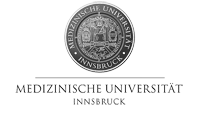|
|
 |
The aim of the study was to analyze the feasibility of mobilization and harvest of peripheral blood hematopoietic stem cells and to evaluate long-term safety of the use of growth factors in a cohort of 28 minor sibling donors, as well as to criticaly consider some ethical and legal aspects of childhood donation.
Methods. We performed a retrospective analysis of 28 consecutive minor sibling donors in a 10 year period, from 1995 to 2005. Statistical analysis was performed using Pearson’s chi-squared correlation test and Student´s t-test.
Results. 28 childhood donors (17 boys and 11 girls) from 3 to 18 years, with body weight from 17 to 74 kilograms were mobilized with granulocyte colony-stimulating factor (figrastim 24 donors, lenograstim 4 donors) and were given 5-10 µg/kg/day subcutaneously once daily in the afternoon. After 3, 4 or 5 days, all but one donor subsequently underwent one single leukapheresis with a sufficient number of stem cells obtained, using a continuous flow Cobe Spectra blood separator. Central venous access was required for collection in 20 donors. Growth factor administration, central venous catheter insertion and leukapheresis were well tolerated with no severe adverse events reported. An informed consent of the donors parents was required before the beginning of mobilization and no other authority outside the family and hospital was appointed to determine about the donation. Slovak Republic Legislature allows under certain circumstances tissue donation in minors. In ten years we observed no serious late side effects in our donors´ cohort.
Conclusion. Our results indicate that peripheral blood hematopoietic cell mobilization and harvest is an uneventful and safe procedure for healthy minor sibling donors, that results in sufficient number of stem cells collected for transplantation. Long-term follow-up of the minor donors is nevertheless necessary to obtain relevant data about possible late side effects, still so scarce in the literature.
